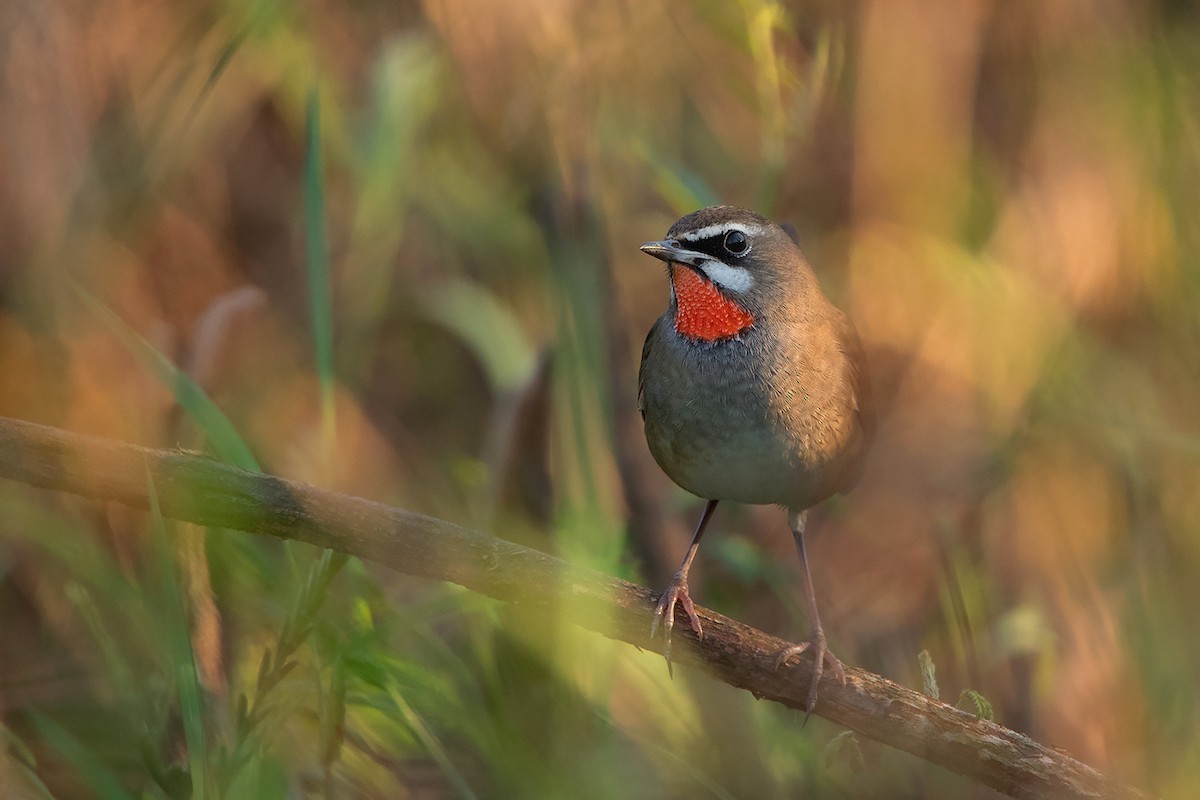Siberian Rubythroat
A species of Nightingales and Allies Scientific name : Calliope calliope Genus : Nightingales and Allies
Siberian Rubythroat, A species of Nightingales and Allies
Botanical name: Calliope calliope
Genus: Nightingales and Allies
Content
Description General Info
 Photo By Ayuwat Jearwattanakanok
Photo By Ayuwat Jearwattanakanok Description
The Siberian rubythroat (Calliope calliope) is a small passerine bird first described by Peter Simon Pallas in 1776. It was formerly classed as a member of the thrush family, Turdidae, but is now more generally considered to be an Old World flycatcher of the family Muscicapidae. The Siberian rubythroat and similar small European species are often called chats. It is a migratory insectivorous species breeding in mixed coniferous forests with undergrowth in Siberia. It nests near the ground. It winters in Thailand, India, Indonesia and Bangladesh (See wintering range map). It is an extremely rare vagrant to Western Europe, having occurred on a very few occasions as far west as Britain. It is also an extremely rare vagrant to the Aleutian Islands, most notably on Attu Island. This species is slightly larger than the European robin. It is plain brown above except for the distinctive black tail with red side patches. It has a strong white supercilium. The male has a red throat edged with a narrow black and then a broad white border. It has a strong white supercilium. Females lack the brightly coloured throat and borders. The male has a song similar to a harder version of the garden warbler. The Siberian rubythroat was previously placed in the genus Luscinia. A large molecular phylogenetic study published in 2010 found that Luscinia was not monophyletic. The genus was therefore split and several species including the Siberian rubythroat as the type species were moved to the reinstated genus Calliope. Calliope, from classical Greek meaning beautiful-voiced, was one of the muses in Greek mythology and presided over eloquence and heroic poetry. 
Size
13 - 23 cm
Nest Placement
Ground
Feeding Habits
Siberian Rubythroat primarily consumes insects, capturing them through agile foraging and aerial hunting techniques. It exhibits a preference for varied invertebrates, showcasing unique adaptation in discerning prey availability, with dawn and dusk being favored feeding times.
Habitat
Mixed coniferous forests with undergrowth
Dite type
Herbivorous
General Info
Feeding Habits
Bird food type
Sounds
Song
Recording location: Japan
Call
Recording location: United States

 Photo By Ayuwat Jearwattanakanok
Photo By Ayuwat Jearwattanakanok Scientific Classification
Phylum
Chordates Class
Birds Order
Perching birds Family
Old world flycatchers Genus
Nightingales and Allies Species
Siberian Rubythroat